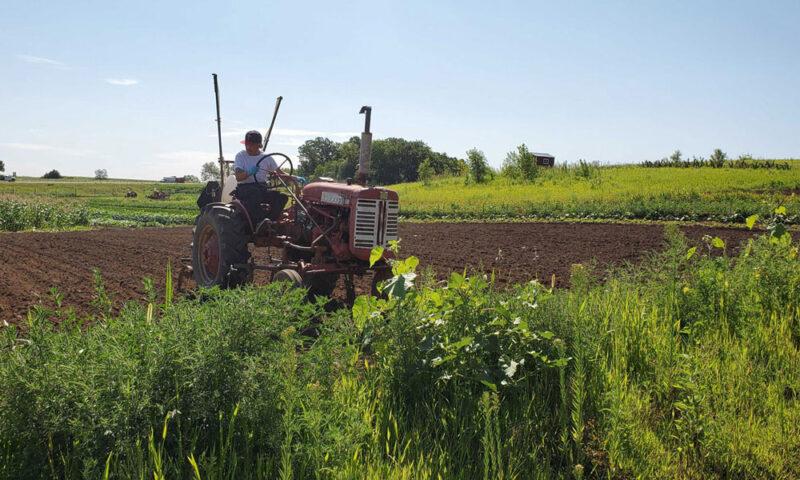
How to Perfect the Art of Perseverance
Building toward a long-term goal isn’t easy. But with a lot of perseverance and a little bit of luck, the Hmong American Farmers Association was able to pull off a major aspiration, purchasing property to support its farmers.
For decades, farmers markets around Minnesota’s Twin Cities have benefited immensely from the work of the local Hmong community, an ethnic group with roots in China and Southeast Asia.
Building intergenerational wealth among Hmong Americans—a community of more than 300,000 that moved to the United States in the 1970s as refugees of wars in Vietnam and Laos—has been a challenge. But since its 2011 founding, Minnesota’s Hmong American Farmers Association (HAFA) has been working to take steps to fix that. Its biggest, boldest step came in September, when the organization successfully purchased 155 acres of farmland it had previously leased.
It was the culmination of a long-term goal—and one that highlights the power of perseverance. Here’s how they did it.
Building Security for Farmers
Minnesota has the largest concentration of Hmong Americans in the United States and is second by total population to California. However, building intergenerational wealth has been a challenge, particularly for farmers, who represent more than half of vendors at farmers markets in the Twin Cities but on average make less per acre than white counterparts, who tend to own their land or get better prices as renters.
Part of HAFA’s founding challenges involved building security for its members, said executive director Janssen Hang. To address that goal, HAFA has built healthcare programs, launched a community-supported agriculture program, taught members about business and financial literacy, and offered a financial matching program to allow members to purchase equipment. Hang said that HAFA sets the tone for members by ensuring its own financial security.
“Our organization is all about our members,” Hang said. “And if we aren’t secure, then that means that there is also an insecurity for our farmer members.”
But from the beginning, owning land that could be offered at or around cost to Hmong farmers was an important symbolic goal.
Our organization is all about our members. And if we aren’t secure, then that means that there is also an insecurity for our farmer members.
Janssen Hang, Executive Director,
Hmong American Farmers Association
“We knew that we needed to secure land,” Hang said. “That was this big dream, this vision that we wanted to accomplish one day, but not knowing when that day would come.”
It eventually did.
Reaching a Long-Term Goal
In 2014, HAFA began leasing a plot from an anonymous benefactor, who set up a contract with an option for HAFA to purchase the land after eight years. The organization was not in a position to purchase the land on its own, but a new “Equity in Bonding” program, encouraged by Minnesota Gov. Tim Walz, set aside cash grants for community-based organizations like HAFA.
This required much advocacy work for HAFA leadership, which had to speak to state assembly members to argue for appropriating $2 million to support the purchase.
The added complications of 2020—both from COVID-19 and because the Twin Cities were the epicenter of the protests surrounding George Floyd’s murder—extended the process. But by late 2020, the state had passed the bill, and the organization was working to raise the matching funds the bill required for access to the appropriated money.
Finally, by September 2022, HAFA had raised the funds and worked out an agreement with the owner, allowing it to purchase the land.
“It’s a huge milestone for HAFA to have accomplished this, first of all,” Hang said. “Second, this is truly a historic moment. Nowhere in the United States has a Hmong farming organization purchased land of this size for over 100 Hmong farmers.”
Hang said that the response from HAFA members has been strong. He’s already seeing signs that members are increasingly confident in the wake of the announcement, including discussing the possibility of handing land to later generations—which leans into the organization’s broader goals of building long-term wealth.
“It is a cultural thing, because when we think about building community, wealth needs to come from within,” Hang said.
Lessons for Other Associations
A major, long-term success of this nature can help create lasting momentum shifts—the ALS Association, for example, was able to take the funds raised in 2014 through the Ice Bucket Challenge and apply them to research into new medications, one of which was just approved by the Food and Drug Administration, eight years after the viral challenge earned headlines.
HAFA’s road ahead is still lengthy—it will now have to learn how to best manage this property, which will require more fundraising. But the organization has shown its tenacity in following through on a success story 11 years in the making.
“There is no recipe to this, especially when we’re constantly addressing these changes in our community, in our policies,” Hang said. “That has a large impact, as a nonprofit organization that is heavily focused on grant funds, whether that’s federal funds or foundation funds.”
By rolling with the punches, Hang said, your association will make it through.
“Be flexible, be nimble, and be persistent, and you will persevere through all this,” he said.
(via the HAFA website)






Comments